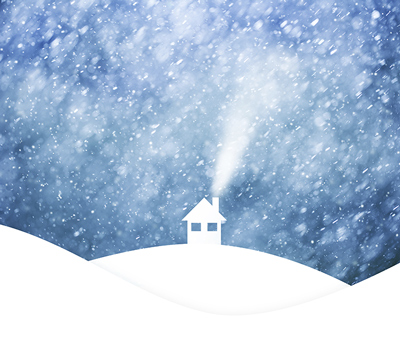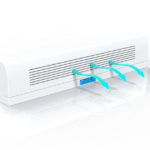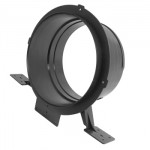 With winter on the way and temperatures dipping, it’s time to think about winterizing homes for the cold.
With winter on the way and temperatures dipping, it’s time to think about winterizing homes for the cold.
First thing to do is take a walk around the house and inspect any wall caps and vents for damage and make sure dampers are not jammed open, particularly the flapper type. Check for any damage to roof overhangs and eaves. Soffit vents can get blocked by animals, insulation or debris and must be clear to prevent ice dams and allow for proper attic ventilation.
It’s also worth getting up on the roof to check for damage to shingles and the integrity of flashing around skylights and roof vents. Any sign of potential leaks should be sealed with mastic or caulking. Roof vents themselves are often damaged by hail and snow so it’s worth replacing them with high quality, UV-resistant resin ones.
One serious risk is leaving hoses connected to outdoor faucets. Because water expands as it freezes this can lead to burst pipes and potentially extensive damage. Make sure hoses are disconnected from the frost free type as well and either shut off standard faucets inside the house or enclose with a foam protector or wrap with insulation.
Within the house the furnace is the most important aspect of keeping the house warm. Aging furnaces of 20 years old or more should be replaced with modern high efficiency systems. An annual furnace service is a good idea that involves lubricating the blower motor and various other adjustments.
The furnace filter should be changed every three to six months in order to help the furnace work effectively and improve indoor air quality. Check that heating vents and cold air returns are not blocked by furniture or clogged with dust. Vacuuming out any debris from the registers will also help with the efficiency of the system.
If it’s possible to inspect the ductwork in a crawlspace or basement follow it along and check for leaks. All joints and connections should be sealed with foil tape or mastic. If you suspect ducts are very dirty it’s worth recommending a duct cleaning service.
The other main aspect of keeping the house warm is whether there is sufficient insulation. The attic is the one place this can be easily added and it is desirable to have the equivalent of R40 or more. While you’re in the attic check for any signs of water leakage or mold growth. Also look for signs that animals may have entered through gaps or vents. Vents with screens and dampers are available that will prevent the entry of pests.
Windows lose a lot of heat so single glazed ones should be replaced with double-glazed or triple-glazed. Older double glazing can have seals that fail which can be spotted by condensation on the inside of the glass. Having heavy curtains that are drawn at night but open to the sun during the day are also a good idea.
Search for leaks around the house. This can be done with an infrared meter from the outside that shows where heat is escaping. A low-tech method is to go around the house with a candle, which can indicate drafts. Windows and exterior doors should be properly sealed with caulking and weather stripping should be applied to all parts that open.
Heat can also escape around openings for plumbing under sinks and vanities. Large gaps can be filled with insulation or expanding foam sealer. Unused fireplaces can be a big source of heat loss, check the damper works and seals effectively or better still install a chimney balloon that inflates inside the flue forming a proper barrier.
With all these tips, on top of keeping the house warmer, the homeowner should also benefit from higher energy efficiency and lower heating bills.



